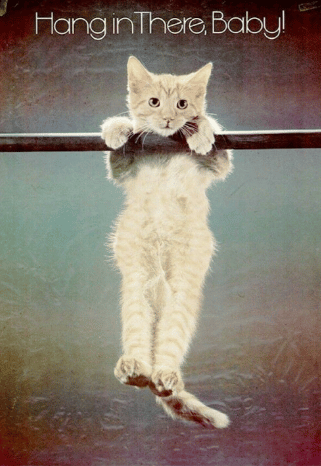
Dark descended quickly high up on the mountain. The blizzard grew stronger and piled thick snow on my tent. But I was foggy and lethargic and barely aware of the clammy wet nylon sagging onto my face. Mostly, I was focused on breathing which was difficult as I gasped into fluid-filled lungs crackling in a death rattle.
It was a miracle I made it through that night. But even in my weakened state my mind held onto the thought that with the right attitude and enough determination, I could reach the summit.
Fortunately for me, when I tried to stand, I fell over. I say fortunately because if I had been able to walk, I might have continued heading up instead of down, which ultimately saved my life.
That harrowing experience on Argentina’s Aconcagua, the highest point in the Western Hemisphere, happened a decade ago and still haunts me. Death had me in its grip and yet I too had a death grip on a feeling of invincibility and a desire to keep moving forward.
Right now, I’m safely in Saint Paul. It’s winter and the time I set aside to dream and prepare for my next backpack trip as well as talk about backpack trips of the past. People enjoy when I share the knowledge I’ve gained through trial and error – like what gear to use, how much weight to carry, how to plan a route, what to eat – and my pictures and stories, while sometimes cautionary, are always entertaining.
In the end, though, backpacking is less a sporting activity than a backdrop for contemplation. My journeys teach lessons that are like rock cairns guiding me through my off-trail life. In fact, those lessons are the very reason I backpack. As a professional speaker, I share this trail “wisdom,” and, along with my research, these ideas end up challenging preconceptions. That helps all of us move forward toward what we really want out of life.
Is quitting really failing?
One of the preconceptions I’ve been thinking a lot about lately is the idea that quitting is failing. Think of the inspirational poster from the 1970’s with a cat hanging from a metal bar, a mantra above his head reading Hang in There, Baby! That awkward animal came to represent a whole generation of sticktoit types, who would Keep on Truckin‘! Try, Try Again! as well as endure all manner of pain (no pain, no gain!) since Quitting Lasts Forever!
Feel-good mantras certainly have their place. They reflect an optimistic spirit, a healthy mindset that means seeing the positive in things, believing in yourself and believing that your ability can make things happen.
Optimism can go beyond seeing the bright side of a situation or expecting good things. It’s also a way of explaining what has already happened. It was most likely an optimist who created that hanging-in-there cat poster. That’s because only an optimist would view the setback of being forced to hang from a pole as a temporary one, and one that the cat – once safely down – would easily bounce back from.
Optimism is generally a good thing because it helps us imagine a better future and to keep on keepin’ on! It also has physical benefits by lowering stress levels, putting our minds at ease and acting as the catalyst to eat better and to exercise. Of all the creatures in the animal kingdom, humans are hard-wired to be optimistic.

Optimism Bias
But optimism has its short-comings. With “rose colored glasses” we tend to overestimate our chances at success even in the face of negative data. This can lead to misjudging situations, causing us to make terrible decisions.
Neurologist Tali Sharot has done a lot of research in this area at the University College London. She points out that while most of us take in bad news all around us, we tend to be overly-optimistic about ourselves, sometimes to the point that we are unable to accept that any bad things can happen to us. As rational creatures, we may prepare for the worst and yet our minds are unable to imagine the worst. This cognitive dissonance is aptly named “Optimism Bias.”
Optimism can be measured in the inferior frontal gyrus, the portion of the brain associated with cognitive functions, including attention, motor inhibition and imagery. When researchers in Sharot’s lab disrupted the right side of the frontal gyrus in their subjects, they made interesting discoveries about how these subjects managed bad news. They also found that they became better at integrating negative information into their belief system.
This can be extremely important in helping people manage anxiety and stress, but for our purposes it shows that we need to find ways to override our impulses, especially in dangerous situations, being prepared to face reality and let go of a goal – in a word, quit.
Heading back up to that snowy night for just a second, it might seem patently obvious that I simply needed to quit the mountain. But that wasn’t at all clear in the moment. Being hard-wired for optimism, I fell into the trap of believing that what was happening to me physically was something that could be overcome and managed. Maybe I could wait it out. Maybe I’d get better. “Look how far I’ve come already,” I thought. “The summit is right there!” I was totally at the mercy of my optimism believing that I had it in me to keep going even when I was on the verge of succumbing to high altitude pulmonary edema.

I did get off that mountain, but not entirely by choice. I was with other people who forced me off, tying me to a short-rope and delivering me to base camp where a helicopter flew right past the snowy summit, so close I could practically touch it. Safely below, I did not feel relief, instead I questioned my actions and beat myself up for quitting; for failing.
Friends I hadn’t seen in years invited me to visit them in Patagonia and even amongst a loving adopted family, lots of good food, lounging by the pool and sipping mate from a silver straw, I struggled with the choice I made.
Cutting Your Losses
There’s a wonderful phrase that describes quitting when we push past our optimism bias and begin to face facts: cutting your losses. It sounds pessimistic and negative because it focuses on losing and escaping before those losses pile up any higher. And yet seen in another light, it’s about options. It shouldn’t come as a surprise that “optimism bias” can cause us to do a lot of stupid things like make bad investments, stay in a marriage beyond its sell-by date, believe we’re excellent drivers or ignore a health problem. In a baffling and tragic manner, optimism bias has had dire consequences for backcountry skiers, ones who are highly trained and experienced yet venture forth in unstable conditions thinking they are immune to tragedy.
The great American thinker Joseph Campbell, who brought the idea of the archetypal hero from mythology into our everyday lives wrote, “We must let go of the life we have planned, so as to accept the one that is waiting for us.” As I look back on quitting Aconcagua, a scale appears in front of me. On one side is ‘summit fever’ and on the other is the unknown. As I weigh certain death against certain disappointment, I realize it takes a true optimist to reach toward life. It may be a life that’s unknown, but it’s for sure, a life continuing.
Quitters don’t win and winners don’t quit, so they say. But intentional quitting is not a bad thing and abandoning a goal can sometimes be one of the most positive things you can do.
This is part one in a series about intentional quitting as a force for a more positive and fulfilling life. Read more: Quitting is Optimism, Quitting is Saying Yes, Quitting is Believing in Abundance, Quitting is Awareness.


6 Responses
Alison, this article is the finest I’ve ever read about the issue you address – knowing when to quit and not seeing it as failing. Thank you. I’m sure that I have viewed quitting as failure myself. Although you are much younger than I am, you are becoming my mentor.
thank you! I hope I have something that helps since I learned a lot myself from the lessons offered on trail!
Alison, your message today is a book in the making.
ahhh! thank you! the trail has been my best guide!!
Well written and I’ll file this in a “Keeper” file and definetly share with others.
thank you! I’m exploring the topic from many sides and welcome your thoughts.